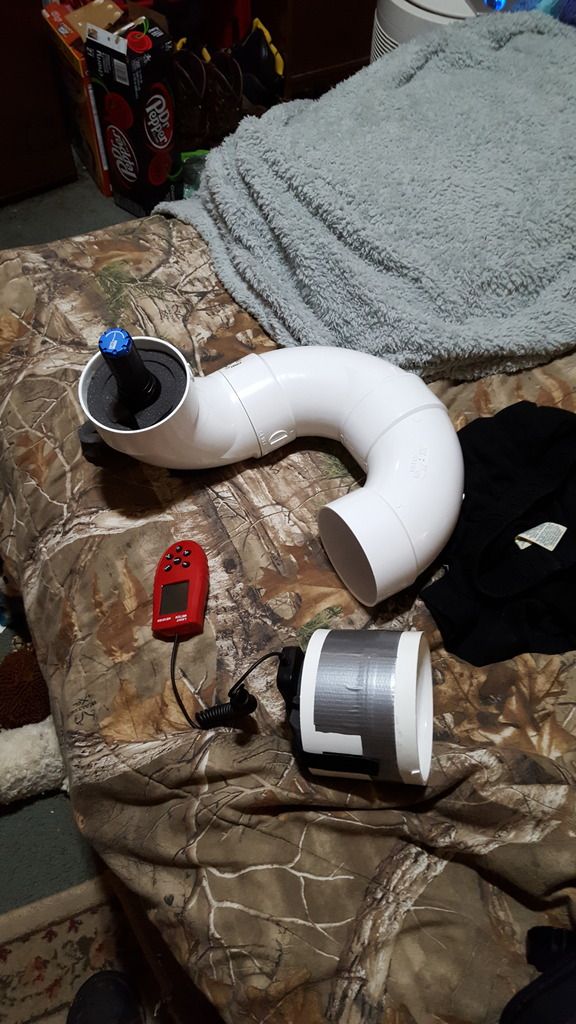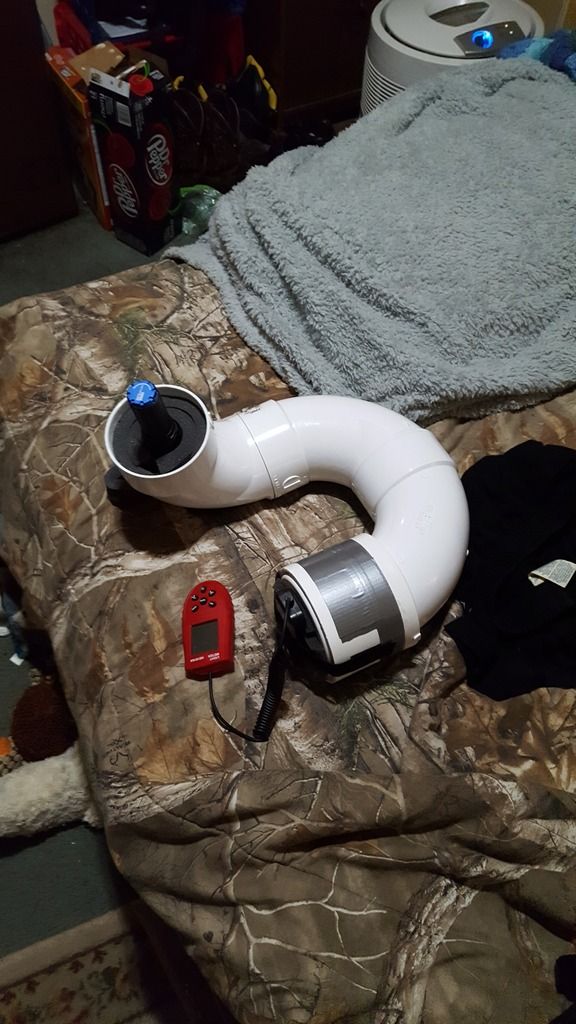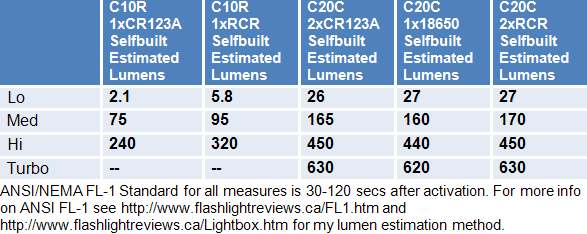That’s pretty creative jon. I think a setup like that is plenty good for establishing basic outputs and doing A B comparisons on the effects of modding a light etc.
@jon_slider - I had initially started with this method but I found that as temp increased, it'd adversely affect the readings (measured lower) on my HD450. This plus the size limitation ultimately led me to pursue the pipe route. It worked well for smaller low powered lights though. Have you noticed whether temperature affects readings on your meter?
Thx!
Finished up my box earlier so far the reading look about what I expected.
I am almost done with the pipe, Just got to start pushing light through it. Great list you have already posted. Unfortunately I could not use even one of the.... Just my luck.
I can always just use most of the lights that I know are correct from getting the box calibrated.
no I have not noticed any heat issues, my readings seem pretty consistent
the way I use the light meter is brief, I do not leave the light on the meter for long…
I set a timer on my phone and test high every 10, or medium every 30 minutes, just for a moment on the meter. I have no data logging or constant ON time for the light meter… and the light does not stay on the meter between tests. Also my lights are single AAA, heat is not a major factor at 80 lumens ![]()
Im sure the spheres and draintubes are much more versatile for larger and brighter lights with different reflectors. Im jealous of people with datalogging setups, as well as the ability to measure CRI and Color Temp… like maukka…
Im happy to see Terry White has made progress on his setup, and will be curious to watch how he uses the tool… So far it seems to inform which battery is brightest :-)… all good fun
I'm posting a picture of my tube which has been very accurate using a calibration fator of 3.7. Used on 50 or 60 lights and calibrated from 10 known.
What do I need to add to get to the point yours is.
Thank you in advance for the help.

The factor of 3.7 could be eliminated by adding a diffuser disc, For example a thin layer of styrofoam between the light and the tube
Or a piece of white printer paper, or more than one layer, between the light meter in the end of the tube, so that your meter will read directly in lumens
Okay that sounds easy enough.
My current meter is a bit lower end than rhe Extech. I can measure in either lux or foot caldle. Correct me here of I'm wrong please... I would only need to convert lux to lumen. And I'm guessing use a known light to determine the right amount of paper or stryofoam?
Im no expert, so this is just my opinion
I would use a known light to set the Lux value and see if you get correct scaling for the test light. Iow, calibrate your pipe to match the Low on the light, then test the high mode to see if it is close to what you expected
maybe others with more experience can tell you more… but thats all I did
For anyone interested in calibrating to true ANSI lumens, there is now another good data point from someone that has access to laboratory integrated spheres in THIS CPF thread.
[QUOTE=Barbarin]Thanks to my job I do have access to many integrating spheres and photogoniometers. Real, accurate, expensive and calibrated ones. To give you an idea, during the last 24 months I bought more than ten complete labs for one of my customers…
…. I could say that no one of the well known reviewers have a serious integrating sphere, but they do their best with “lumen box” devices. A real integrating sphere with the software, sensor… will range from 4000US$ to 10000US$. The smallest photogoniometer will be well over that price tag. And you will need some room at home, even a whole small room.

*This is the minimum equipment you need to test seriously a small light source.
What is the problem with “lumen boxes”? I think the problem is the calibration. If you think that 45 lm are 75 lm, all your measurements will be wrong. But reviewers, with their best will. get a light source and some numbers that they believe they real, BUT in fact as many companies are cheating is difficult to find a calibrated light source.
…….snip……

On this one I will tell the name of the manufacturer and model, because what they claim is real. Is a Sunwayman C20C. A small light I own and usually is with me. Tailcap current is 1300 mA. Also turbo mode.[/QUOTE]
I assume many of us that test lights use Selfbuilt’s reviews as reconciliation point as he tests many lights, and on a consistent basis. SB has tested the C20C HERE

The difference between Barbarian and Selfbuilt is:
- Turbo: 620/466=133%
- High: 440/308=143%
As I mentioned in my post #92 above, I have been calibrating to ti-force’s lumen scale, and for the SC52 example I posted above, Selfbuilt tested the H2B mode to be 120lms, vs my 88lms estimate, or 120/88=136%.
Barbarian and ti-force are the only two I have ever seen claim ‘accurate’ lumens with laboratory testing equipment, or laboratory tested calibration lights, and not surprisingly, they seem reasonable consistent with each other…. although not so much with the popular reviewers, and many ‘respected’ manufacturers.
We can use whatever lumen scale we want, of course, but I think for those of us that have the knowledge and equipment to test lights, to use/report an overly lenient lumen scale on specialist enthusiast site actually condones the manufacturer specification gaming, when we might have a chance to fix it.
Im confused on how to read Barbarin’s chart
where does it say whether he is testing Turbo or High?
the max number he posted is 466, not 620
also confused how to read selfbuit’s results, his chart seems to say 450 on high
can you help me clarify how to read the charts please?
Im confused on how to read Barbarin’s chart
where does it say whether he is testing Turbo or High?
the max number he posted is 466, not 620
also confused how to read selfbuit’s results, his chart seems to say 450 on high
can you help me clarify how to read the charts please?
I use 10 to 15 known light sources to calibrate before testing a light for a review. I am normally within 3% of claimed output of all of those used for calibration.
I will never be dead on now will any type of measuring device, there are just too many variables. Heat, cold, current, condition of the emitter. 2 identical lights will measure differently.
It is a never ending chase and probably always be...
Look at SB’s 18650 column (620T/440H), that’s the battery Barbarin is using. 620 is what SB gets on Turbo, 466 is Barbarin’s true lumen reading on Turbo - SB’s estimate is 33% higher on Turbo, and 43% higher on High (440SB/308B) than B’s.
You know B is testing Turbo, because he said SWM is honest and SWM specs 450 T and 280 H for this light. You know the light steps down from T to H by looking at SB’s graphs of both modes, or reading SWM Specs, and you can see the set-down from T to H in B’s graph. B’s graph gradation lines = 50lms increments.
Hope that answers your questions.
Hope that answers your questions.
yes, thanks!